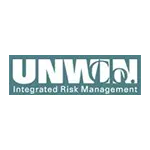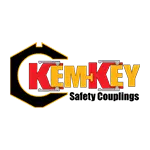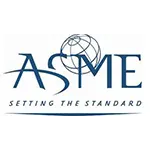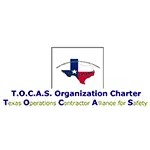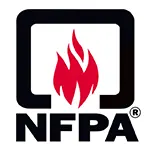Let us help you make sense of PSM / RMP!
My friend Brian Chapin will be offering an open-enrollment PSM/RMP class in Burleson, Texas, July 8th to 11th, 2025. Brian is an absolute pro in NH3 Refrigeration Process Safety. Anyone who attends will also get a FREE membership to SAFTENG. You can get more information on the class with this link.
CLICK HERE to Renew your Membership
CLICK HERE for a NEW Membership
CLICK HERE to see eligibility requirements for FREE Membership
If you have any questions, please contact m
SAFTENG has:
- Over 18,000 categorized unsafe acts/conditions and accident/injury photos
- Over 1,500 ppt's & doc's in the SAFTENG Library
- Over 4,000 Technical Articles on Process Safety, Emergency Response & OSH topics
- Over 450 videos (those not allowed on YouTube Channel)
Many THANKS to my NEW Members and those who CONTINUE to support SAFTENG:














March 26, 2011
It appears we may be blending 1910.146(c)(5) and (c)(7) in our attempt to reclassify a PRCS to a non-permit status. We must follow (c)(7) in our reclassification efforts. It does sound as if our PRCS may be able to be reclassified; however, I am not familiar with the type of space or specific situation. OSHA states in (c)(7) that a PRCS can be reclassified if it has NO known OR potential...
Read More
March 26, 2011
A space is a CONFINED SPACE when ALL THREE (3) of the following characteristics are true about the space: Is large enough and so configured that an employee can bodily enter and perform assigned work; AND it has limited or restricted means for entry or exit; AND it is not designed for continuous employee occupancy Once you have determined the space is a CONFINED SPACE, the next step is to determine...
Read More
March 26, 2011
A post I made in regards to “Fall hazards being part of a hazard making a space a PRCS”
Falls are NOT considered to be a hazard for consideration in evaluating a “confined space” for hazards that would make it a Permit-Required Confined Space.
See the MEMORANDUM FOR:
…
HomeRead More »
Read More
March 26, 2011
OSHA does have an exception to “consumer products” in regard to what has to be in the HAZCOM program. For example, Windex would be excluded if the quantities used on site are that of what a consumer would use. So, if you have a few bottles of Windex in janitorial closets, you do not need an MSDS for Windex. However, if you have a 55-gallon drum of Windex, you would need to include this...
Read More
March 26, 2011
Each year, HAZCOM is OSHA’s most often cited standard, and many of us would agree that a HAZCOM program is like the “A” of the ABCs of safety. However, we often see programs that are not up to 100% compliant. Here are the OSHA requirements for our written program. Does your program meet these? In general, the written program should consider the following elements, where applicable:...
Read More
March 26, 2011
OSHA has clearly established that hotwork can not take place in the presence of combustible dusts. 1910.252(a)(2)(vi) Prohibited areas. Cutting or welding shall not be permitted in the following situations:
…
HomeRead More »
Read More
March 26, 2011
We continue to see facility’s struggling with the basics of hot work safety. Most of these businesses are self insured and therefore do not have the extra set of eyes from their insurance carrier from time to time. But all do have catastrophic insurance and I am amazed that these carriers do not expect more. None the less, OSHA has set some minimum standards for Hot Work. These are NOT options,...
Read More
March 26, 2011
Today I spent the day helping a company, insurance investigator and fire marshal investigate a Hot Work (HW) fire at a facility. The facility swore up and down that they follow their hotwork procedures to the letter and that there is no way that hotwork could cause the fire. When it came my time to speak I tried to explain that no hotwork procedure and permit is 100%, because humans write the procedures,...
Read More
March 26, 2011
We get this question in every 24, 40, and 8 hour refreshers we do. The scenario is most often like this…emergency alarm sounds, response team responds and begins operations to control and mitigate the emergency. Senior management, not part of the ERT, arrives on scene and begins to ask questions about the tactics and timing. AS LONG as they are NOT part of the Incident Command system and are...
Read More
March 26, 2011
Fittings leaks on chlorine tank cars and tank trucks rarely occur. Should a leak occur, however, prompt corrective action is required by trained, competent personnel with special equipment to stop the leak until the contents can be unloaded safely. The proven equipment to meet this critical need for more than 40 years has been the Chlorine Institute Emergency Kit “C,” which is specifically...
Read More
March 26, 2011
Community emergency response agencies should be integral components of the community ERP. The community-wide ERP should spell out specific roles and responsibilities for various organizations or agencies, and will state which function each agency is expected to play in the event of an emergency. The employer’s ERP may reference or otherwise include all or applicable sections of a LERP or SER...
Read More
March 26, 2011
This section of the ERP lists the inventory of PPE and emergency response equipment and materials. The ERP must include instructions on how the PPE and equipment and materials are to be used, their limitations, and in what situations emergency responders will use them. HAZWOPER requires the IC to be aware of the equipment and PPE available during an emergency. In addition, responders trained to the...
Read More




